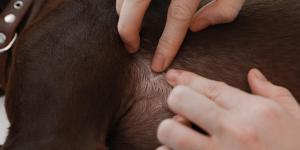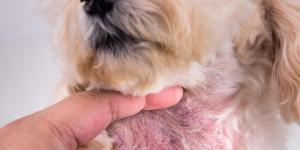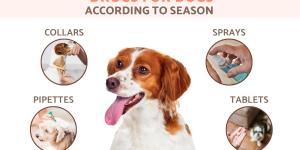Irish Wolfhound

Irish Wolfhounds is one of the most loved and appreciated Irish breeds. Its history is ancient yet well-known as it was already mentioned by Julius Caesar in the comments on the Gallic War. At that time they were valued for their combat skills, especially for the ferocity with which they attacked their enemy.
Currently, the Irish Wolfhound stands out as one of the most docile and affectionate dogs. In this AnimalWised breed sheet we're going to explain everything you need to know about the Irish Wolfhound, including their characteristics, training, care and health care. Keep reading if you're thinking of adopting one!
- Europe
- Ireland
- Group X
- 5-14
- 14-18
- 18-22
- 22-27
- 27-31
- More than 31
- 2-7
- 7-22
- 22-55
- 55-100
- 100-220
- 8-10
- 10-12
- 12-14
- 15-20
- Low
- Meidum
- High
Origin of the Irish Wolfhound
These dogs are believed to be descendants of the first Egyptian sighthounds, who came to Ireland through the Celts. The Celts were interested in breeding tall large dogs. The existence of these dogs was already known in the year 391 AD when the Roman consul Aurelio expressed the amazement with which all of Rome saw the seven animals that had arrived there as a gift. Formerly it was also known as “cu”, because in Ancient Rome it was baptized as “Cú Faoil”, which in Gaelic means hound.
In the 19th century the decline of the breed was so pronounced that it was thought that their breed may disappear. This was due to the fact that the Irish Wolfhound was used to hunt Irish elk, and once the population of these animals decreased, the use of the Irish Wolfhound as a hunting dog also decreased. Thankfully, a British army captain named George A. Graham was able to rise this breed from the ashes. He rescued it by crossing Irish sighthounds with bulldogs and Scottish sighthounds.
Physical characteristics of the Irish Wolfhound
The Irish Wolfhound is among the tallest dog breeds in the world, competing with the Great Dane. The minimum height at the withers for a male Irish Wolfhound is 79 centimeters and at least 71 centimeters for females. Male Irish Wolfhound weigh 54 kg (120 pounds) and females weigh 47 kg (105 pounds). Unfortunately, the life expectancy of an Irish Sighthound between 6 to 8 years.
This large dog has a long and broad-chested body, with a slightly arched back and a long tail, slightly curved and covered by a good coat of fur. Their head is elongated, measuring the same width of the skull as the length of the muzzle, which has a pointed shape. The ears are small and their shape is like that of a rose, just like a greyhound. Their eyes are dark and of medium size.
The coat of an Irish greyhound is made of hard, long and strong hair especially in regions such as the lower part of the jaw or around the eyes. This coat can be gray, brindle, black red, pure white or fawn.
Character of the Irish Wolfhound
Despite their history as a hunting dog, Irish Wolfhounds are actually very hostile, affectionate and friendly. These peaceful dogs are also known as “friendly giants” and they were attributed the saying “Lambs at home, lions at hunt”. Nevertheless, these dogs can be a great dog companion for singles, couple or even families.
These dogs adapt to almost any type of coexistence, whether with children, the elderly, pets or other pets. These dogs are so patient and noble that there will hardly be any confrontations with anyone who is part of their family. However, they are also very loyal dogs and will not hesitate to defend their loved ones in dangerous situations.
Caring for the Irish Wolfhound
When caring for an Irish Wolfhound, the first thing we need to keep in mind it their coat care. You will need to brush their hair at least twice a week to avoid tangles and to keep their coat clean. Baths should be limited and only done when necessary.
As a large dog breed it's understandable that these dogs need plenty of exercise. In fact, the Irish Wolfhound need at least one hour of high intensity daily exercise. This may include running, jogging or long walks. They will also need time to play in order to be cognitively challenged and mentally stimulated. As large dogs, they will also need a spacious home. These dogs are not recommended for apartments. A house with a large backyard or even a farm is an ideal home for these large dogs.
In regards to diet, these dogs will need high quality nutritious canine diet to fuel their activities and keep them in good health.
Training the Irish Wolfhound
Like any other dog, Irish Wolfhounds will need to be properly trained from a young age. The first thing you should teach them is paper training as a puppy. This will help them recognize when they need to relieve themselves and it will also make it easier for us, as their caregivers, to clean up after them as puppies. Once they have all the proper vaccinations and they are ready to go out for their first walks, it's time to properly socialize them. This will help them have a balanced temperament as an adult.
Next, you can begin to train your Irish Wolfhound by teaching them basic commands that will keep them sage in the future in certain situations. We also recommend you do this via positive reinforcement. This will ensure that your training sessions will help you bond with your dog and make sure they do not develop any behavioural issues as adults.
Health care of the Irish Wolfhound
Unfortunately, the Irish Wolfhound is one of the dog breeds with the most health problems. As with other giant breeds, they are prone to elbow or hip dysplasia, bone cancer, hypersensitivity to anesthesia or medications, heart issues and liver issues. This is why they have such a short life expectancy.
However, one of the most relevant dangers when talking about Irish Wolfhounds, is the dreaded gastric torsion. To avoid this disease, don't allow your dog to do physical activity right after eating. Make sure they rest and digest the food first. You must also recognize the symptoms as soon as possible, these include lethargy, distended abdomen, vomiting and restlessness. If you see your dog experiencing these symptoms or any other abnormal behaviour, you must take them to the veterinarian as soon as possible to be properly diagnosed and treated.
Lastly, make sure you keep up to date with your dog's vaccination schedule, deworming schedule and regular check-ups with their veterinarian. By following these tips, your dog is sure to live a happy and healthy life!
Irish Wolfhound photos














